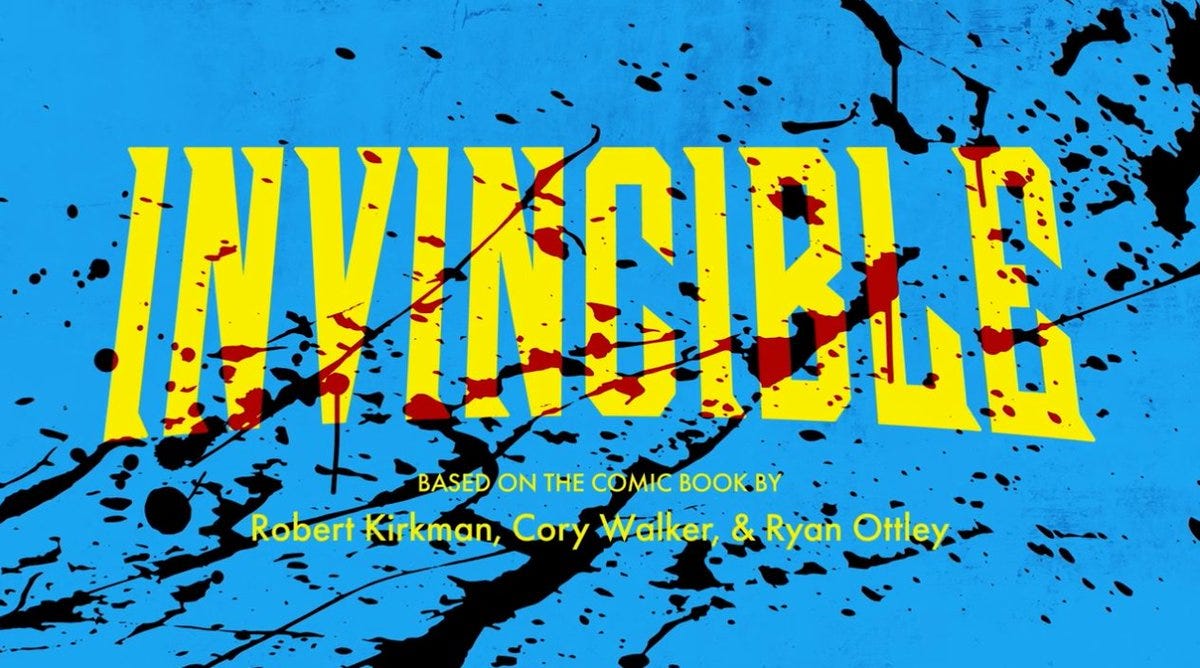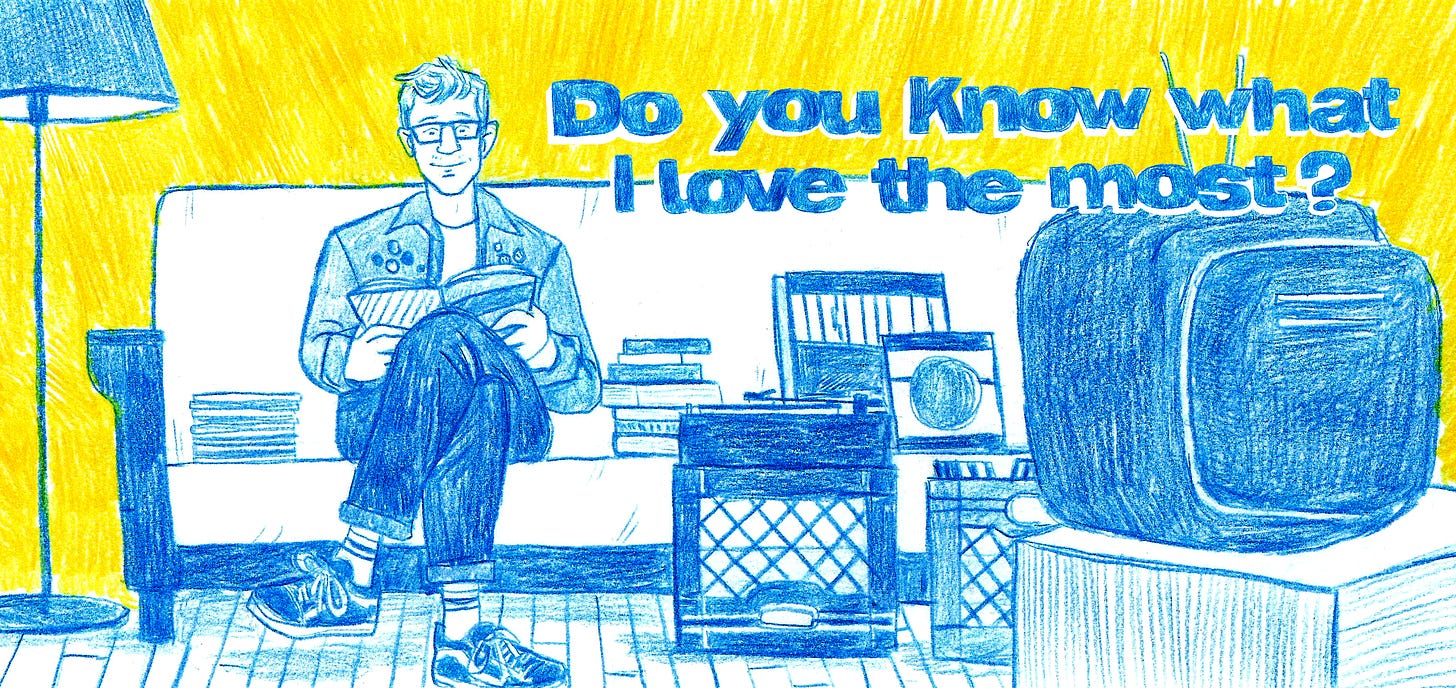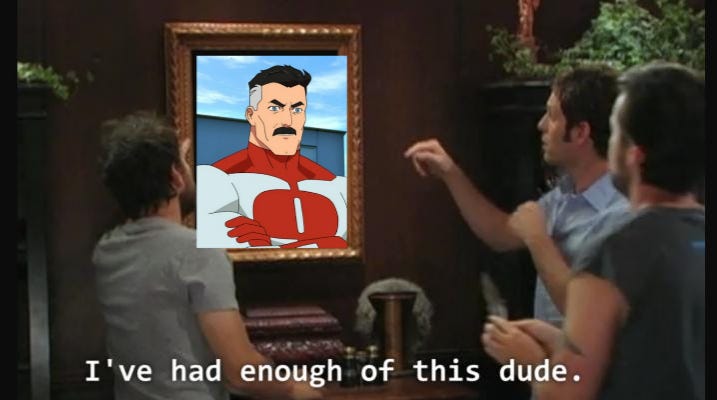When I was in high school, I wrote this fan fiction crossover between the manga One Piece and the Teen Titans animated series. I bring this up only because of one fight scene I wrote early in the story, where the Titans were taking on a group of Marines. It was a brutal battle, wherein Terra buried a soldier alive and Starfire incinerated another with an energy blast. When I went back and reread this chapter a year or two later, as I finished the story, I was shocked and appalled by what I had written. It was a level of violence beyond what either franchise usually attempted, especially from the heroes. That was the bigger problem; the Titans fighting so ruthlessly was extremely out of character, especially when they were just defending themselves against misguided pawns rather than using their abilities to protect others or save the world. I couldn’t come up with any explanation why Starfire would resort to this level of violence in this specific situation.
Looking back, I realized I’d gotten so caught up in the thrill of choreographing the most bad-ass fight scene possible that I’d lost sight of my characters, and while that might create temporary excitement, it ultimately left the scene feeling hollow.
I see this problem pop up often enough in fiction. One habitual offender is director Zack Snyder. His film adaptation of Watchmen created some visceral and thrilling fight sequences, but in doing so betrayed the entire spirit of the original story, where the heroes were instead portrayed as pathetic and ineffectual; if Snyder’s version of these characters are actually effective fighters, then it destroys their arc of learning that the world never needed them and they had put on their costumes just to hide their own dysfunction. Likewise, the only enjoyable action sequence in Batman vs. Superman is when Batman takes on the group of thugs who had kidnapped Martha Kent; the choreography is brilliant, if you ignore the fact that Batman flat-out murders most of these thugs. Yes, despite his hard “no kill” rule in the comics Batman also killed in the Burton films, and yes, Snyder actually does have an explanation for why his heroes all kill, but that explanation largely comes across as “not killing is naïve and idealistic” and at least in the Burton films Batman killed his major villains, while in Snyder’s films he kills random thugs but leaves the Joker alive time after time, making him look less like someone hard on crime and more like just a psychopath. Even the Snyder Cut of Justice League — which I mostly liked! — went back and added extra blood splatter into the scene where Wonder Woman stopped a group of terrorists at a movie theater, ramping up the violence for no other reason than to make sure viewers all know that these heroes kill. All together this paints a portrait of an artist so in love with violence that he doesn’t really understand, or care, how fetishizing it so makes his heroes look.
I suppose that’s my core stance when it comes to violence and gore in fiction. I’m not against them by any means — I love a good fight scene or action movie as much as anyone — but after years and years of stories automatically equating gore with maturity when, in fact, it often means the exact opposite, my automatic reaction to extreme violence, especially in superhero properties, is simply to roll my eyes.
With all that in mind, I was pleasantly surprised recently when I sat down to check out Amazon Prime’s new “adult” superhero animated series Invincible. The owner of my comic shop warned me it was an incredibly gory series, and he was 100% right. But it’s gore that has a purpose, gore that has something to say, and I find that fascinating.

Invincible — based on the same-named comic series from Image Comics, written by Robert Kirkman (creator of The Walking Dead) and illustrated by Cory Walker and Ryan Ottley — is largely a coming of age story following teenage Mark Grayson, son of the world’s greatest superhero Omni-Man, as he gain superpowers and attempts to follow in his father’s heroic footsteps. Despite being a fairly serious and often somber series, Invincible also has a playful side. While the characters are specific and well-sketched, the writers quickly establish the world they live in using familiar superhero tropes and archetypes; there’s the standard superhero vs. supervillain battles, monologuing mad scientists, government agencies that don’t trust the superheroes they oversee, and superhero teams galore, such as the Guardians of the Globe, whose each and every member are obvious rip-offs of a Justice Leaguer. This all works as a brilliant bit of narrative shorthand, not only allowing the writers to bypass most of the prerequisite exposition and origin stories, but also creating an expectation of tone that the extreme violence will quickly go on to upend entirely.
And that is what I love the most about Invincible’s use of violence and gore. It’s not the norm. It’s never used so much that the viewer grows desensitized to it. Instead, every instance of extreme violence is designed to shock both the characters and the viewers out of complacency.
Take the first episode. Aside from the superhero mission that opens the episode — Omni-Man and the Guardians of the Globe vs. a couple of clones looking to assassinate the president — it’s actually a little slow, languishing in Mark’s mundane life before his powers emerge, then showing how he struggles to control and adjust to them. That sleepy pace is absolutely shattered by the final scene, when Omni-Man shows up on the Guardians’ satellite headquarters and proceeds to brutally slaughter them one-by-one. The change of pace alone is jarring before we even get to the actual twist.
But that twist, though — boy, what a twist! Again, the ultra-violence only serves to heighten it. It isn’t just the fact that Omni-Man turned on his fellow heroes, that the man Mark looks up to is a false idol; it’s the fact that Omni-Man turned in the most brutal way possible, dismembering and tearing his colleagues to shreds, bathing both himself and their base in their blood1. The violence and gore makes the point that the single most powerful, unstoppable being on Earth is a relentless, remorseless killer, and that is horrifying. It creates a tension that hangs over every single scene with Omni-Man moving forward.
Another touch I appreciate is that Invincible rarely has its heroes inflict any of this extreme violence. Instead, it’s something that villains inflict upon heroes or civilians; instead of being used to make heroes look “bad-ass,” it’s used to remind the heroes, and the viewers, of the perils of this world and the horrors that the heroes are regularly exposed to.
Take the second episode, where Mark — now having taken up the titular superhero mantle “Invincible” — and a group of fellow teenage heroes take on a seemingly unstoppable swarm of alien invaders in the middle of a crowded city. Completely overwhelmed and outnumbered, the heroes are taking major damage, and the aliens are slaughtering civilians by the hundreds. At one point Mark is being splattered by blood left and right, and though I don’t know if it was the intention of the scene, it certainly reminded me that one of the inherent dangers of being a hero would be being constantly covered in random people’s bodily fluids.

For Mark, though, this is his first exposure to this level of violence and he’s completely shell-shocked, practically paralyzed by the sheer amount of suffering that surrounds him. In the end he only manages to evacuate a single civilian from the encounter, and he’s still shattered when she ultimately doesn’t survive. Invincible never sugarcoats the hazards of being a hero, both physical and emotional.
Ultimately the alien invasion is stopped by Omni-Man, who not only sends the invaders packing, but follows them home to their own planet. This is another disturbingly brutal scene as, far from the eyes of anyone on Earth, Omni-Man essentially commits genocide, nearly singlehandedly razing their entire world. Yeah, this serves to even further reinforce the points I made about Omni-Man a few paragraphs ago, but it also flips the script a bit in regards to these alien invaders, turning them from victimizers into victims.
This is another neat trick Invincible pulls off with its extreme violence; instead of fetishizing violence by inflicting it on faceless minions, Invincible uses its violence and gore to remind viewers of the humanity of even its most minor characters, even ones who, like the alien invaders, were committing war crimes only moments before (there’s something to be said about the vicious cycle of violence there, to be sure). The White House battle that opens Invincible’s first episode spends quite a bit of time on a discussion between two guards, one of whom delivers a monologue about his step-son and their relationship. When a villain is about to crush him to death only a minute later it creates actual stakes because we’re starting to care about this guy, but then this character and his step-son proceed to pop up here and there every other episode of so, becoming the face of the civilians who keep getting caught up in the chaos of superheroic life and reminding viewers of the toll these battles take on them too.
In episode 7 Omni-Man turns on his government “handlers,” attacking soldiers who are quite literally faceless because of the helmets they wear. Though it’s subtle, Invincible still takes their suffering and perspective into account. There’s palpable panic when they’re discovered by Omni-Man and vainly try to fight back. One soldier tries to crawl away to her safe house across the street before Omni-Man smashes her head into the ground like a melon, but just that one gesture from her and the time the camera spends lingering on her as she attempts to flee flips this scene, making it just as much about Omni-Man’s victims as it is his discovering he’s been found out. Invincible cares a lot about the victims of its extreme violence, and that goes a long way towards ensuring that it never turns gratuitous.
Even though this extreme violence becomes more common as the series progresses, Invincible makes sure it never starts to feel rote or standard by continuing to focus on the toll such relentless violence takes on our protagonists. As the series has gone on, Mark’s enthusiasm about becoming a superhero has waned more and more as he’s not only learned about the responsibility it entails, but as he’s endured tragedy after tragedy after tragedy. At the time of this writing — after Episode 7 — Mark doesn’t even want to be a hero anymore because he’s tired of all the pain it’s caused. Viewers understand exactly where Mark’s coming from because, like Mark, we’ve seen the violence just escalate, felt it pile up on our soul.
Invincible doesn’t revel in ultra-violence. Invincible doesn’t think it’s the gore that makes it a mature show. Instead, it uses its gore to make a point, to help tell its story, develop its characters, and ultimately, make a point about the effect living through and/or committing such violence would have on anyone, even a hero. That’s damn good writing, and among both superhero series and so-called adult animation, it’s just such a refreshing perspective.
NEW PROJECT: WAS GARFIELD FUNNY TODAY?
Hey guys, I started a new project this week over on Twitter dot com called “Was Garfield Funny Today?” Every day I’ll post the newest Garfield comic strip and tell you, the reader, whether it’s funny or not.
Why? I want to be flippant and say why not, or just pass it off as a silly, dumb idea, but honestly, I think modern Garfield is worth taking the time to examine in this manner. 97% of the time it’s just awful in ways that reek of laziness and should absolutely be called out, but there’s a good 2% of the strips that could be really funny if only someone tweaked a punchline or put a modicum more effort into the art, and then there’s the even rarer occasion of a downright funny strip that seems worth pointing out. Even if I’m the only person who cares, I do, legitimately, care.
Anyway, here’s a few examples from this first week:






If you want to be kept up-to-date on just how funny Garfield is on any given day, give it a follow!
ABOUT
“Do You Know What I Love the Most?” is a newsletter from Spencer Irwin about his relationship with the stories he loves. Spencer is an enthusiast and writer from Newark, Delaware, who likes punk rock, comic books, working out, breakfast, and most of all, stories. His previous work appeared on Retcon Punch, One Week One Band, and Crisis on Infinite Chords, and he can be found on Twitter at @ThatSpenceGuy. If you like this newsletter, please subscribe and share with your friends!
Logo by Lewis Franco, with respects to Saves the Day.
In fact, this moment takes the blood and gore from metaphor to actual plot point. First, some of the blood is left on the wall of the Guardians’ HQ to remind their B-List replacements of what happened to the originals. Second, the blood coating Omni-Man’s suit ends up being how his wife (Mark’s mother) discovers that he’s behind their deaths. On every level, the blood has meaning.






Gore is trash, and the disire of it actually comes from sick minds.
So Invincible is trash.
And none of you get it.
As time goes on each of you are pushing the barriers of whats acceptable to the point where the story is lost. Eventually were going to get depictions of things like this happening to kids and there will be people like this author there justifying it.